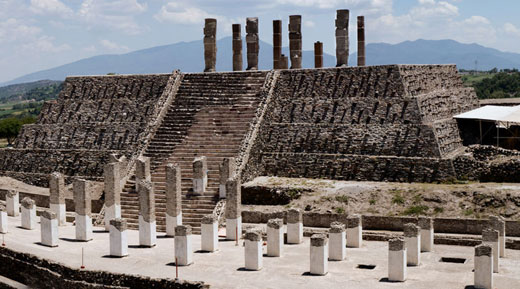Nicki Forman-Levitan spoke to Gurmukh on behalf of Complete Yoga and discovered her enlightened, shining self, radiant and strong…
 Gurmukh Kaur Khalsa is one of the best known proponents of Kundalini yoga worldwide. She is the co-founder and director of Golden Bridge, the premier centre for the study and practice of Kundalini yoga and meditation in Los Angeles, California. Gurmukh was given her Sikh spiritual name by Yogi Bhajan and means “the one who helps thousands of people across the world ocean” and spends her life dedicated to fulfilling her namesake.
Gurmukh Kaur Khalsa is one of the best known proponents of Kundalini yoga worldwide. She is the co-founder and director of Golden Bridge, the premier centre for the study and practice of Kundalini yoga and meditation in Los Angeles, California. Gurmukh was given her Sikh spiritual name by Yogi Bhajan and means “the one who helps thousands of people across the world ocean” and spends her life dedicated to fulfilling her namesake.
Q: What life experiences led you to find yoga?
A: Well, I was unhappy. I was longing to belong to something. I needed a purpose and a reason to be alive. I wanted to know my destiny and, even though I didn’t have these words available in 1970, it was certainly my soul’s searching that led me to yoga and to find the purpose of why I was here.
Q: What is distinctive about the Kundalini yoga tradition as taught by Yogi Bhajan?
A: Kundalini yoga is so experiential that you can have an epiphany, an awakening after your first class. It works body, mind and soul like nothing I’ve ever done. There’s nothing that takes you through the layers of your subtle body like this practice.
Q: What does your spiritual name Gurmukh mean and how did it come to be given to you?
A: It was given to me while I was living in an ashram in Arizona where Yogi Bhajan had come to visit. He had only been in America for a year when I met him, but he gave us spiritual names upon our request. Whenever I get lost, confused or in conflict with my life, I go back to my name and it delivers me back to myself.
Q: What is the message that you hope to spread to the world?
A: The message is to serve. Service brings you your ultimate happiness. The message is to touch the souls of other people whether by providing food, shelter, money, yoga, hope or simply a hug – that’s our purpose. It’s to Gurmukh Kaur Khalsa is one of the best known proponents of Kundalini yoga worldwide. She is the co-founder and director of Golden Bridge, the premier centre for the study and practice of Kundalini yoga and meditation in Los Angeles, California. Gurmukh was given her Sikh spiritual name by Yogi Bhajan and means “the one who helps thousands of people across the world ocean” and spends her life dedicated to fulfilling her namesake. help uplift and be a forklift for humanity; that’s where true happiness comes from.
Q: What cause is especially close to your heart?
A: Children – from those in the mother’s womb to pregnancy to giving birth, to small children to teenagers. They are especially close to my heart because children’s minds aren’t as moulded as adults. I love to help children – from the orphanage in North Eastern India to helping projects in South Africa and locally here in LA. I love to help adults as much as I can too, but the children are the generations that are going to carry this world and many of them have no tools at all. We have to nurture, help, serve and teach them.
Q: How do you marry your spiritual goals with your worldly responsibilities?
What insight do you have for those following a spiritual path?
A: Yogi Bhajan always said that you have to match the heavens to the earth. So, somebody who just editates all the time and is kind of “spacey” and isn’t really paying their way on the earth is really no success at all. Yet, if you only spend your life on the earth plane without connecting with the Divine then that’s not it either. It’s a balance – what you do on the earth is the same as what you do in the heavens. It has to be impeccable in consciousness and it has to be clean, honest and truthful. The best way to do it is to get up early in the morning and meditate, thank God and clean your consciousness so that you are clear for the day to serve. You’ll be bright and alert. The trick is to get up before the sun comes up. Second, go to work and work hard. Don’t be afraid of hard work; work is a kind of worship. Then share, share your earnings. Those three are the key to total completion on earth and in the heavens.
Q: Your focus on pre and post-natal yoga and breath work is interesting. What is the Khalsa method of pre-natal yoga and how is it different to other kinds of pregnancy yoga?
A: The premise of The Khalsa Way is to bring higher consciousness to the mother through breath, asana, meditation, chanting and prayer. A mother can birth well when she has developed her consciousness. We learn how to move our bodies and go through certain things so that we can correct our mind and lose the fear. We work hard and we meditate deep. Women have come to me saying that it changed their lives, because mothers have to rebirth their own lives too. You rebirth, you go back to your own time when you were in your mother’s womb and you do a lot of forgiving. You get lots of clarity and become conscious, not stuck within old patterns.
Q: The Sikh faith is unknown to many Westerners. What is the tradition and how was it born?
A: First of all, you don’t have to wear a turban or be a Sikh to teach Kundalini yoga. In fact, probably eighty percent of our teachers all over the world are not Sikhs. We cover our heads to keep the tenth gate energy contained in the body, the eighth chakra. The turban scientifically is like a pyramid that opens up the higher centres and the beard is simple – men and women don’t cut their hair because we leave ourselves the way God made us. Hair also acts as an antenna, pulling energy in from the universe. Sikhism, however, was started about 550 years ago by a man called Guru Nanak Dev who walked for 44 years singing songs and praises of God. He was a Hindu who walked with Mardhana, who was a Muslim. They walked all over India, they walked all over China, Tibet and the Middle East and they walked and walked and just sang songs and prayers of God and that’s how the Sikh faith started. It has three basic beliefs: rise in the ambrosial hours of the morning and thank God, work hard and share. It’s become a big religion, the fifth largest world religion now, although many people don’t agree with the basic teachings of Guru Nanak to be vegetarian and not drink alcohol. Out of the teachings came Kundalini yoga and meditation, which are in our scriptures. We have meditations from Buddha, from Moses, from Jesus. We have meditations and kriyas from every walk and every religion. Sikhs believe that there is one creator and so it allows and includes everybody in becoming part of it. It has no discrimination, no qualifications, you just do it – men and women of any faith, any religion – all four doors of the Golden Temple are open at all times no matter who you are. It’s a universal religion.
Q: Your next visit to South Africa is planned for February 2010; is there anything special you hope to achieve?
A: I would like to do prayers in South Africa and see a unity of yogis gathering together. I’d also like to teach women and children from the townships and allow them to experience yoga. I’d like to do as much seva as possible. There’s so much happening in South Africa and I can’t wait to meet the yoga teachers and get a feeling for the community and just become a part of it.
Q: What philosophy do you live your life by?
A: We are here in a spiritual body having a human experience and it’s our birthright to be happy, healthy and holy. If I remember those things when times get challenging, then I remember who we are. We need to keep going forward, teaching that and giving people hope and getting them back on their feet, remembering that even if we have to live in the earth plane, we are not of it. People have to experience this for themselves though, so my whole thing is teaching, helping and uplifting.









































